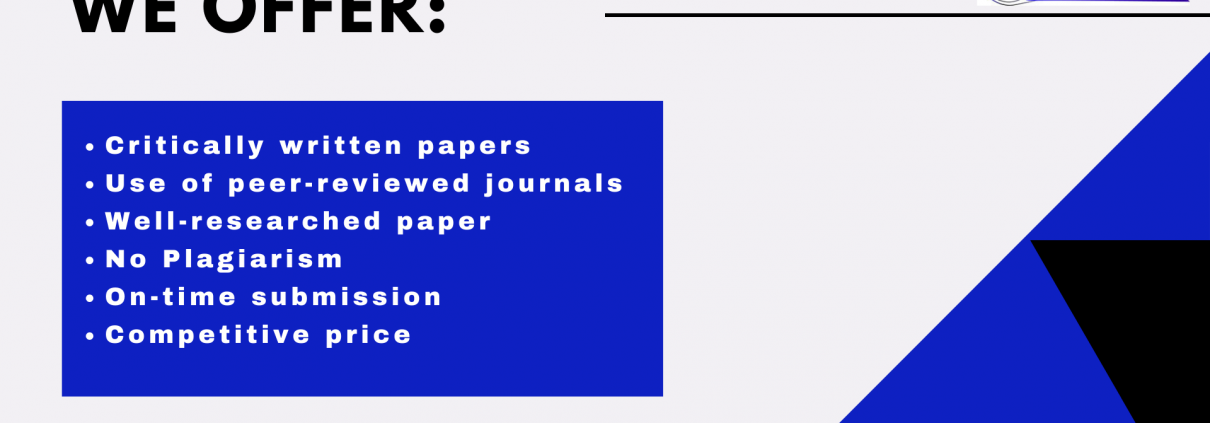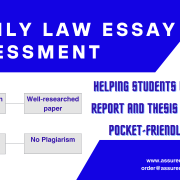Introduction
The organization performing in any sector influences the culture and motivation of the management and employees. It is very important to analyze the motivation of the employees to constantly engage them in a productive manner. The behaviour of an organization relies heavily upon the motivation and culture prevailing in that place. This report will demonstrate a detailed study of organizational behaviour in reference to retail companies based in the UK namely Iceland. The report will analyze the impact of culture and politics on the behaviour of the organization. The report will critically analyze the impact of culture and power on individual and team behaviour while reflecting on its effect on the performance of the company. The report will also discuss the motivational theories and models like Maslow’s Hierarchy of Needs and Skinner’s Reinforcement theory and their influence on the organizational behaviour of Iceland. The report will also briefly discuss the influence of these theories on the stakeholders involved with the company. The critical evaluation of power, culture, politics and motivation will be included in this report along with its influence on organization success. The report will analyze the importance of teamwork demonstrating its effectiveness on the company performance. For the better understanding of readers regarding teamwork and its importance team theories like Tuckman and Belbin’s theories will be included in this report. A detailed study of the above-mentioned theories will be included in this report analyzing their effect on the organisational behaviour of Iceland. The concept and philosophies regarding organisational behaviour will be analyzed in the report framing its importance in the success of Iceland.
L01 “Influence of culture, politics and power on the behaviour of others in an organizational context”
“Analysis of organizational cultures, power, and politics”
“Organizational Culture” – It can simply be defined as the ways in which an organization’s leadership works towards cultivating or taking care of the business, its stakeholders, and employees (Lubis, and Hanum, 2020). The “culture” within organizational contexts refers to the employees’ and leaders’ behaviours in the workplace. Organizational culture supports the organization to achieve its strategic objectives, also assists in attracting the right employees, and is marketed to the key stakeholders and customers. It is essential to the organization’s success because it is often found to be mirroring the core business values and directly reflecting their Leadership (Allen et al., 2019). The culture of an organization is observed according to their decision-making whether it is “top-down” or “bottom-up”. Also if there is an open environment for the employees to express their thoughts and feelings independently. One of the well-known classifications of organizational culture is “Competing Values Framework” which divides it into four types:
- “Adhocracy Culture”
- “Clan Culture”
- “Hierarchy Culture”
- “Market Culture”
Power – Power in organizational behaviours refers to the ability to influence the behaviour of others according to “one’s perspective” and achieve the relevant objective. The person in power within an organization has the capacity of causing alterations in the working process, producing effective and wanted results, and affecting others’ perspectives or influencing them. The perspective of power has been studied by social psychologists namely “Bertram raven and John French” to understand the source of power within an organization and they described “5 bases of power” in 1959 (Badura et al., 2020).
- “Legitimate Power”
- “Expert power”
- “Referent Power”
- “Reward Power”
- “Coercive Power”
Politics – Organizational Politics is referred to as the unofficial, informal, or sometimes the “behind-the-scenes efforts” of selling ideas, influencing others and the organization itself. It is used to increase leadership power or to achieve the targeted objectives (Maryati et al., 2019). The study of organizational politics is found to have been the interest of many researchers and practitioners throughout the years. Various researches and literature have classified the study of organizational politics into three categories: “Political behaviour, perception of organizational politics, and political skills” (Allan et al., 2018). It is described by many theories and researches that the actual behaviour of politics and its perceptions within an organization is associated with negative outcomes regarding personal as well as organizational behaviours. It is also insisted that these outcome negative relationships are unavoidable. However, political skills are partly inherent and can also be practised as the measure for training individuals to survive in the deemed political environments of different organizations. According to the publication in the “Harvard Business Review,” there are four types of metaphors for organizational politics (Harvard Business Review, 2021).
- “The Weeds”
- “The Rocks”
- “The High Grounds”
- ”The Woods”
“Critical analysis of culture, politics, and power influencing behaviour in the workplace”
In the organizational context taking “Iceland Foods”, as the subject of this analysis the influence of culture, politics, and power is discussed. Iceland is considered the most innovative retailer and is one of the “fastest-growing” supermarkets of the United Kingdom and was first started in 1970 by Malcolm Walker. It operates with “over 900 stores” across the UK and 40 other franchised stores.The culture of Iceland states itself as “No Frills. No Fuss. Lots of Fun” (Iceland, 2021). The organization values its colleagues and works towards challenging the norms and serving their customers with proper satisfaction. It is also found that the working environment of Iceland is completely fast-paced and they use the top-down approach of decision-making. The challenges and pressure in the working culture of the organization is comparatively high. The composition of Iceland’s Culture has allowed it to be announced as “Britain’s Best Big Company To work for” by “Sunday times”. Iceland is well-known for providing a high level of “wellbeing” and “fair deal” to the staff (Paul and David, 2017). Though some employees criticized the level of hard work required to work for Iceland, the majority of the employees love working there.
They also support the communities through charitable foundations, paying their taxes, and providing value-based quality food products. Iceland applies organizational politics in the business with its suppliers. The retailer demonstrates their fast pace and informally approachable business along with the family culture. Streamlining its business’s terms and increasing the payment processor’s transparency Iceland aims to make trading as simple as possible (Barreto et al., 2017). The leadership power of Iceland works efficiently towards fulfilling the company’s purpose of delivering profitable and sustainable long-term growth that benefits its “stakeholders”. Employees and colleagues are given equal opportunities to state their views to every level of the management directly as well as indirectly. The informal approach of organizational politics and the power of leadership are used to train, develop, and reward their employees.
Iceland has a robust organizational system that influences the organizational behaviours of all the stakeholders, suppliers, customers and its employees. The overall influence of the “power, culture, and politics” of Iceland has shown positive impacts on its overall organizational behaviours. The only area for further recommendation seems to be the employees criticizing the level of hard work required to thrive there and their dissatisfaction with the wages (Robbins and Judge, 2017). However, the majority of the employees love their jobs but Iceland still has room for further development in workplace management and addressing their employees’ needs.
L02 “Evaluation of motivation of individuals and teams”
“Motivation theories and techniques”
Figure 3 – “Motivation”
(Source – Buchanan and Badham, 2020)
The most common definition of motivation describes it as the social, psychological, or biological state of an individual that drives them to perform certain specific tasks. The theories of Motivation are referred to as the studies based on understanding the specifics that drives the person to do something or continue what he/she is doing and focusing on the achievement of “particular goal or outcomes” (Alapo, 2018). Motivation theory is essential for everyone but is particularly crucial for “Business and its management” and the use of these theories in every organization defines its organizational behaviours. Through the process of motivation, the leaders and managers of an organization shape, encourage and provide their employees with purposes to be motivated which results in amplifying the company’s productivity.
There are different types of motivation theories applied according to the needs of the organization and the content and process are the models consisting of different theories.
“Content Model of Motivation”
The content models of motivation consist of the theories that focus on the conceptual thinking of “what” people think “they need in their lives”. This model evaluates the base of peoples’ necessities to acquire their needs as the drive for motivation (Buchanan and Badham, 2020). This theory suggests that by understanding those needs it can be understood what and how they will be motivated. “Content model school of motivation” is considered to be the older one among the two schools and is used popularly in leadership and management purposes. The famous content model explained below is “Maslow’s Hierarchy of Needs”.
“Maslow’s Hierarchy of Needs”
In relation to different researches and evaluations, Maslow’s theory of hierarchical needs is considered the most “well-known” amongst all other theories and is based on the stages of human needs. According to this theory, human needs are based on the stages of the achievement of their needs and this theory places it in a hierarchical sequence from the lowest to the highest order. In simple terms, it states that if the need of an individual in the given level is satisfied, the need no longer serves to be motivated (Buchanan and Huczynski, 2019). There are five classifications of these needs hierarchy:
“Physiological Needs” – The basic needs of human life like food, shelter, water, clothing, and necessities to survive are the physiological needs mentioned in this hierarchy theory and hence relate to their maintenance and survival. These needs influence human behaviours tremendously and are insisted to be met at least partly before the emergence of higher-level needs. Setting adequate salaries in the workplace allows them to fulfil their basic needs.
“Safety Needs” – The need for safety refers to the need of an individual to feel protected and within a workplace it relates to employees’ personal safety and the sense of “job security”.
“Social or Belongingness Needs” – This need refers to the requirement of the employees to be accepted within the workplace, seeking to make friendships and to provide them with a sense of belonging (Robbins et al., 2017). Organizations meet these needs by providing them with an open environment for bonding and sharing their views independently.
“Self-Esteem Needs” – In this stage of hierarchical needs, the recognition, consideration, and admiration factors are the concern of the employees. Receiving recognition in the workp[lace grows their confidence and boosts their morale which results in the fulfilment of “self-esteem” needs.
“Self Actualization Needs” – To reach the level of self-actualization, employees seek the achievement of long-term or complex goals. These kinds of employees are motivated to achieve workplace goals more effectively.
“Process model of motivation”
This model of motivation refers to concerns on “how” people are motivated. Overlooking an individual’s internal needs, process models focus on the behavioural and psychological drives of humans. These provide the understanding of “actions, interactions, and contexts” motivating an individual’s behaviours (Serenhov and Kaldera Hollu Pathiranage, 2021). The theory of process model motivation discussed here is:
“Skinner’s Reinforcement Theory” – According to the reinforcement theory of motivation proposed by “BF Skinner and his associates”, the “law of effect” based theory considered the individual’s behaviour to be the “function of its consequences”. AS per the definition, it insists that a person’s behaviour consisting of positive consequences tends to be repeated whereas, the one with the negative consequence is not to be repeated (Bucher, 2018). This theory is focused on what happens when an individual takes an action. It provides a detailed explanation of how behaviours are learnt by the individuals. The methods of reinforcement theory include:
- “Positive reinforcement”
- “Negative Reinforcement”
- “Punishment”
- “Extinction”.
“Influence of these theories in Iceland’s organizational behaviour”400 relevant examples
Iceland has the commitment entitled “Doing it right” and to fulfil its commitment Iceland’s leadership and management-owned the use of these theories in their business. The most effective approach to achieve its objectives and commitments was by fulfilling the needs of its employees by providing a workplace with the best etiquette (Sharma, 2018). As it is a unique business of Britain that is focused on providing frozen food, values, innovation and convenience the company adapted to take these models as its base for workplace development. The business was Malcolm who as an entrepreneur and is the current “Founder and Executive Chairman” of the company, his approach to leadership has developed Iceland to work and grow at the pace it is growing today (Critchfield and Miller, 2017). It was not an easy task for him and his associates to take the business to this level in midst of the heavy competition. But the attributes possessed by Malcolm and his methods of aggressive expansion and the proper formation and retention of its workplace allowed Iceland to expand itself rapidly. Under Malcolm Iceland’s business was transformed drastically which formed Iceland’s success as “remarkable success stories in the retailing industry of the UK”.
LO3 “Demonstrated an understanding of how to co-operate effectively with others”
“An understanding of what makes an effective team, as opposed to an ineffective team”
“Effective Team”
Within the organizational context, effective teams are the ones encouraging the discussion on the point they disagree with and use the approach of healthy conflict and introduce creative changes before reaching any consensus (Driskell et al., 2018). They are considered to view conflicts with positive sight and follow three approaches:
- “Open Discussion” – The members from these teams participate and contribute to the discussions with a reasonable approach and are prepared to listen to the opinion of other group members.
- Avoiding the use of crude voting that can leave “sizable minority disgruntled”, they reach the decision by convincing other members through logical arguments.
- “Use of Situational Leadership” – Different teams are led by leaders with different leadership styles that are appropriate to the circumstances.
- Irrespective of who leads the team, they work towards the achievement of common goals.
- These teams assess their progress by themselves and make improvements in their performance for the achievement of those goals.
“Ineffective Team”
These teams believe in establishing an “agreed viewpoint quickly” and defending those viewpoints against any original or new ideas. They work towards achieving “task completion” quickly but in doing so they fix the symptom of the issues but not the root cause. These ineffective teams can be characterized by:
- Their discussions lack agreed on objectives and the atmosphere gets tense. The tensions created due to these discussions sometimes are positively checked and sometimes create a flare responsible for destructive conflicts (Siregar et al., 2018). There also lie the issues of improperly listening to others’ views and their personalities clash.
- The process of decision-making is done through voting that has obscure means of opportunity for the minority group against the ideas to win. They avoid the process of assessing their progress and performance.
The elements that clashes the “effective” and ineffective” teams can be stated in essence as listed:
| Effective Teams | Ineffective teams | |
|---|---|---|
| Goals | The objectives of their task are well understood and the members also macpet it. | The discussions do not provide clear views about what their tak is and what they want to achieve. |
| Contributions of members | More members participate in the discussions and it remains pertinent to their goals. | Few members participate in the discussions and their views often tend not to contribute to the point. |
| Listening | Every idea provided by the members is heard and responded to properly. | They tend to not listen to each others’ views and minority’s ideas are overridden or ignored. |
| Resolution of the conflicts | Even with the presence of disagreements, there is no presence of uncomfortability or the need to avoid conflict. | Number of disagreements emerges and most of them are not effectively dealt with (Driskell et al., 2018). These ideas are either suppressed by the leaders, or resolved through voting where the group with a minority has little advantage. |
| Decision-making | Almost all of the decisions are closed by reaching a consensus that clears everyone’s general agreement. | Premature actions are taken before reaching a consensus or resolving the issue. |
| Leadership | The discussion is not dominated by the chairperson nor is he/she referred to unduly by the team members (Driskell et al., 2018). | Right of leadership solely remains to the chairperson irrespective of their weakness or strength. |
| Self-evaluation | They examine their operations frequently and deal with the interferences to their operations. | They avoid the maintenance of their actions. |
| Labour division | Clear assignments are created and distributed accordingly whenever some actions are taken. | The labour division is poorly done and no one is clarified about their roles. |
Table 1 – “Effective and Non-effective teams”
(Source – Created by the Learner)
Through the specifications provided above, I can conclude that working with a team effectively requires the practice of many skills and one must listen to the other properly in order to come to a consensus. I suggest that for Iceland to make its teamwork effective and efficient it is crucial to work on the teams and team working strategies (Ferris et al., 2018). The most well-known theories for building teamwork that I would suggest to be applied are:
“Tuckman’s Team Model”
Tuckman’s theory of group development is one of the “most famous” theories of d=tem development. It focuses on the development of teamwork within a group of people with the application of four stages of development – “Forming, Storming, Norming, and Performing”.
“DISC Model”
The theory developed by “Dr. William Moulton Marston” in 1982 has evolved to be one of the most useful models for “conflict management” (Hopper, 2020). It predicts the behaviours of the individuals depending on their four prime traits of personality that has been revised variously and is characterized currently as:
- “Dominance”
- “Influence/Inspiring”
- “Steadiness/Supportive”
- “Compliance/Conscientiousness”
LO4 “Concepts and philosophies of organizational behaviour”
The study and application of knowledge on the ways people act “within organizations” is referred to as the “organizational Behaviour”. It is often described as the human tool for learning human benefits. It is applied to the behaviour of people in a broad context such as government, business, schools, and so on (Idris, 2019). The concept of organizational behaviours assists people, external environment, structure, and technologies to blend and work together in an operating system that is effective and efficient. The classifications of organizational models are:
- “Autocratic Model”
- “Custodial Model”
- “Supportive Model”
- “Collegial Model”
- “System Model”.
Iceland is found to be operating with the supportive model of organizational behaviour; identified according to the aforementioned analysis. These organizational behaviours are based on few “fundamental concepts” that are relevant to people’s nature and the organization itself. These concepts provide a better understanding of the organizational behaviour of the organization.
“Nature of people”
- “Individual Differences” – This is a managerial approach that treats each individual equally, that is the “one-on-one” approach and not the statistical one (Levi and Askay, 2020). Iceland’s management gives all its employees equal opportunities to come forward and keep their views without any fear.
- “Motivated Behaviour” – The employees’ behaviour that are motivated by the person in power is the motivated behaviour and within the organization it is found in negative as well as positive aspects.
- “A Whole Person” – The concept of an individual’s skills and brains not being able to be employed and instead the whole person is employed into the organization.
- “Perception” – The abilities of listening, observing, and concluding discussions properly within an organization is the basis of perception (Idris, 2019). Malcolm Walker, the founder of Iceland had a keen perception that assisted in the organization’s growth.
- “Value of person” – Employees are valued and appreciated for their effective work and even rewarded by the organization and even provided with the opportunities to develop their organizational skills.
“Nature of the Organization”
- “Social System” – It refers to the organization’s social roles and social systems operating the business in different demographics with different customers, suppliers, employees; simply put, the outer world.
- “Mutual Interest” – The mutual interest within a workplace is that the organizations need a workforce and the people need jobs that pay them adequately to fulfil their needs.
- “Ethics” – They are the most prioritized principles for organizations, individuals, and groups. Iceland is an ethical business with a family culture that treats its colleagues and customers with pepper care.
Conclusion
The retail sector is one of the highest revenue generators in the UK economy. Iceland being a UK based retail organisation has been recognized as the fastest growing organisation within the country. The quick adaptation of the latest technology and creative employees has played a crucial role in the company’s success. The culture of Iceland is to provide high quality products to its customers with high quality services. The company has recognized the importance of motivation in the workplace and has implemented a series of theories and models like Maslow hierarchy of needs. This theory helps the management to understand the needs of employees enabling them to make appropriate strategic decisions. Motivation has been identified as an important factor for the performance of the company as it helps the employees to remain goal-oriented. As being a retail company, Iceland has to evaluate the political factors because it influences the behaviour of the organization. The motivational theory like Skinner’s Reinforcement theory is useful in understanding the motivational factors for the employees. It has to be understood that motivation is a transferable aspect and one motivated employee can be a source of motivation to other employees. Factor like culture, power, politics and motivation in the workplace has been an important factor in the success of Iceland in the market. Team development theories like Tuckman and Belbin can be useful for enhancing team performance in Iceland thus increasing the performance of the company. Iceland has been an influence in the retail sector and must constantly focus on the motivation and team performance of the company to increase its profit and sustain in the market.
References
Allen, J.A., Reiter-Palmon, R., Crowe, J. and Scott, C., 2018. Debriefs: Teams learning from doing in context. American Psychologist, 73(4), p.504.
Barreto, M.A.M., Vasconcelos, S.S. and dos Santos, E.F., 2017, July. Motivation and work: A survey of the motivational aspects in industries. In International Conference on Applied Human Factors and Ergonomics (pp. 319-328). Springer, Cham.
Buchanan, D. and Badham, R., 2020. Power, politics, and organizational change. Sage.
Buchanan, D.A. and Huczynski, A.A., 2019. Organizational behaviour. Pearson UK.
Bucher, T., 2018. If… then: Algorithmic power and politics. Oxford University Press.
Critchfield, T.S. and Miller, J.R., 2017. Are Theories of Reinforcement Necessary?.
Ferris, G.R., Bhawuk, D.P., Fedor, D.F. and Judge, T.A., 2018. Organizational politics and citizenship: Attributions of intentionality and construct definition. In Attribution Theory (pp. 231-252). Routledge.
Harvard Business Review. 2021. The 4 Types of Organizational Politics. [online] Available at: <https://hbr.org/2017/04/the-4-types-of-organizational-politics> [Accessed 20 November 2021].
Hopper, E., 2020. Maslow’s Hierarchy of Needs Explained. ThoughtCo, ThoughtCo, 24.
Iceland.co.uk. 2021. Iceland.co.uk. [online] Available at: <https://www.iceland.co.uk/> [Accessed 20 November 2021].
Levi, D. and Askay, D.A., 2020. Group dynamics for teams. Sage Publications.
Robbins, P.S. and Judge, T.A., 2017. Organizational Behaviour, Edisi 13, Jilid 1. Jakarta: Salemba Empat.
Robbins, S.P., Judge, T.A. and Vohra, N., 2019. Organizational behaviour (Vol. 18).











